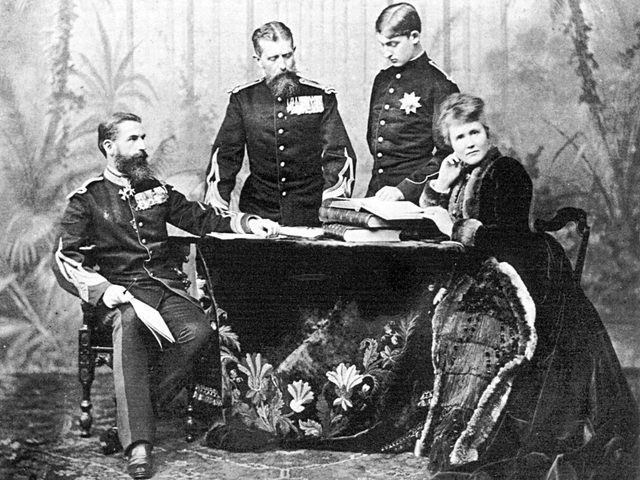Today we make a short foray into the history of
the Palace of Culture in Iasi, a city in north-eastern Romania and a former
capital of the historical principality of Moldavia. Our guide is Lacramioara
Stratulat from the Moldavia Museum Complex:
This was the site of the former
princely court and after the Union of 1859 and the forced abdication of
Alexandru Ioan Cuza and the arrival of Carol I at the helm of the country,
during his first visit to Iasi, the latter promised the people of Iasi that a
number of monumental structures would be built in their city, including a
justice and administrative palace. Building works took 19 years, having begun
during Carol I and having been finished during his successor, Ferdinand I. The
reason it took so long was because of the first world war, including the
difficult years of the refuge in Iasi between 1916 and 1918, so the designer of
the palace, the famous architect I.D. Berindei had to start all over again a
number of times. Each time, the money would run out and Berindei had to re-draw
the plans.
The architect Ioan D. Berindei was an important
name in the history of Romanian architecture in the second half of the 20th
century. One of the proponents of the neo-Romanian style in architecture,
Berindei took it upon himself to finalize the construction of the palace in
Iasi. Lacramioara Stratulat tells us more:
He was the second in his family to
study architecture at the prestigious University of Paris. He was the man who
designed a building of 36 thousand square meters as a light structure, in spite
of being so large, located on the premises of an archaeological site. What makes
this building so special and proves that he was a brilliant architect is the
fact that he succeeded in making this building resilient to earthquakes, such as
those of 1940 and 1977 and also the next ones. The building was not severely
damaged by earthquakes, but in WWII a part of it was destroyed by the
bombardments of the Soviet and German armies. The building was repaired in
quite a short time, after the war. Berindei designed this building in a
flamboyant, neo-Gothic style, with numerous features specific to the Romanesque
style at the interior.
Lacramioara Stratulat has also described the
architectural styles used for the construction of the Palace of Culture:
The building is a mixture of two
different styles, one sober and another one less sober, and it has the mark of
two important kings. The sober style is specific to King Carol I, and the less
sober one was influenced by Ferdinand I and especially Queen Marie, who imposed
trends that were in high fashion in the early 20th century. I refer
to the two entrance doors and the door to the biggest hall in the Palace,
namely, the Princes’ Hall, built in the art nouveau style. Queen Marie was a
fan of the art nouveau style and this can be seen in several areas of the
Palace of Culture. The building first served as a palace of justice, an
administrative palace. Hence the sumptuousness of the main halls. As of 1955,
the building served as palace of culture, a venue for four national museums and
a Cultural Heritage Conservation and Restoration Centre. The four museums are the Moldavia History
Museum, The Stefan Procopiu Museum of Science and Technology, the Ethnographic
Museum of Moldavia and the Art Museum.
Building the palace was difficult, with
obstacles brought about by the historical events of that time. Lacramioara
Stratulat is back at the microphone with more:
The building of the palace started
in 1906, but the project suffered several modifications in time. Construction
works ceased during WWI, the building being used as hospital and as shelter for
the Romanian troops, given that it was the largest building in town. For the
architect, changing the destination of a building that was still under
construction was not a good thing. So, after the troops withdrew to Bucharest,
he rethought some of the elements of artistic architecture, which had been
deteriorated. Given the fact that Berindei counted on a budget that was soon
exhausted, he started looking for friends who could help him replace certain
construction materials, at smaller prices, without affecting their quality.
Worth mentioning is Henri Coanda’s invention, a sort of special cement. As
restoring a building means bringing it to its initial shape, we have managed to
recreate, with the help of experts, that bois cement, and make it look
perfect, like oak tree wood, just as Berindei and Coanda wanted.
The Palace of Culture in Iasi dominates the
center of Moldavia’s former capital. It is, as you may have already guessed,
one of the places worth visiting.

